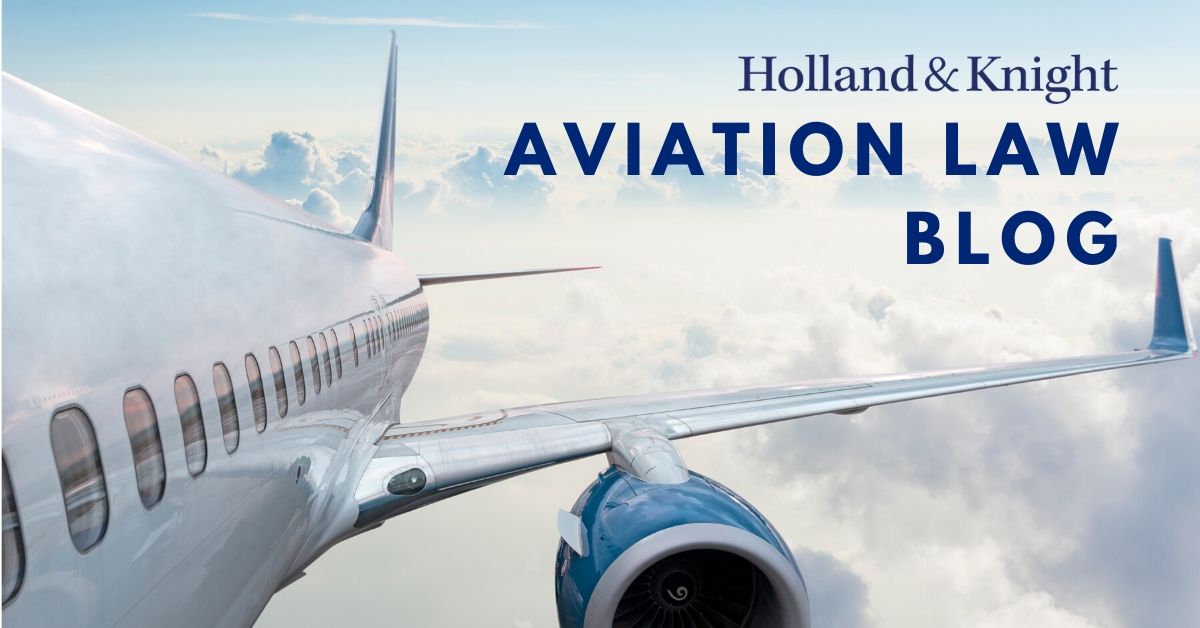Travel
FAA Clears the Runway for the Future of Advanced Air Mobility Travel | Insights | Holland & Knight

The Federal Aviation Administration (FAA) on Oct. 22, 2024, took a significant step toward the future of advanced air mobility (AAM) travel by releasing its final Special Federal Aviation Regulation (SFAR) on powered-lift pilot certification and operation. The powered-lift category of aircraft includes electric vertical takeoff and landing (eVTOL) aircraft or air taxis. Although the powered-lift category has existed for a long time, it was largely unused in the civil context until recent innovations in electric propulsion made powered-lift aircraft more attractive. This updated FAA approach to powered lift aircraft is expected to be the most significant innovation in civil aviation since the introduction of helicopters in the 1940s. Powered-lift aircraft, capable of vertical takeoff like helicopters and efficient cruising like airplanes, are set to revolutionize urban mobility, cargo delivery and other aviation services. FAA Administrator Michael Whitaker’s background working for an eVTOL company prior to his nomination helped inform the FAA’s approach and priority to this SFAR. While this new rule paves the way for widespread use of powered-lift aircraft, it also introduces a host of legal and regulatory complexities that businesses must navigate.
Navigating the Legal Framework of Powered-Lift Operations
The FAA’s rule lays out specific requirements for pilot training, operational standards and certification for powered-lift aircraft. As the rule introduces significant regulatory changes, businesses involved in developing or operating powered-lift technology will need to understand the implications of these changes to ensure compliance. This includes compliance with both new and existing aviation regulations, including Title 14 of the Code of Federal Regulations (CFR), which now incorporates special requirements for powered-lift under SFAR.
- Pilot Training and Certification Compliance. The FAA’s final rule includes a comprehensive framework for the certification and training of pilots and instructors in powered-lift operations. Due to the unique nature of these aircraft – combining characteristics of both helicopters and airplanes – the rule applies some helicopter-specific operating requirements during certain phases of flight, while adopting a performance-based approach for other aspects of operations. Notably, the SFAR allows AAM companies to train pilots in powered-lift with a single set of flight controls. This changes the FAA’s precedent, which traditionally required two flight controls – one for the student and one for the instructor.
For businesses developing pilot training programs, it’s important to note that the FAA has left the door open for future advancements in training technology. Under 14 CFR Part 11, companies may petition for exemptions if they can demonstrate that new training technologies can achieve equivalent safety outcomes. For now, however, advancements in Full Flight Simulator Devices (FSTD) are not yet sufficient to warrant a reduced training footprint, meaning companies must comply with the FAA’s current requirements. Any business interested in proposing an alternative training solution will need to petition the FAA for an exemption in accordance with Part 11.
- Waivers and Exemptions for Operations. Another critical element of the new rule is its provision for waivers under 14 CFR § 91.903. The FAA has amended this section to allow waivers for powered-lift aircraft under certain operating conditions. For example, Section 91.107, which deals with the use of safety belts, is a waivable regulation under Section 91.903, and the corresponding powered-lift regulation (Section 194.302(c)) will also be waivable. This flexibility in regulations offers a pathway for businesses to request deviations from specific operating rules, provided they can demonstrate that safety standards will be maintained.
However, not all regulations are waivable. In cases where a specific rule cannot be waived, powered-lift operators may still petition the FAA for an exemption, providing another legal pathway for businesses seeking operational flexibility. Companies engaged in innovative approaches to powered-lift operations can petition for rulemaking or request exemptions when necessary, enabling them to adapt to evolving industry needs.
- Opportunities for Innovation and Legal Considerations. Though the FAA’s rule provides the framework for powered-lift operations, it also is expected to spur innovation within the industry. The FAA acknowledges that technological advancements may lead to new approaches to training, operations and safety. Businesses that pioneer new technologies or methodologies in powered-lift operations have the option to petition for regulatory exemptions or request the FAA consider new rules under Part 11. This offers a significant opportunity for companies to influence future regulatory developments and carve out competitive advantages in the powered-lift market.
At the same time, businesses must remain vigilant about regulatory compliance. The FAA has made it clear that safety remains its top priority, and the agency will closely scrutinize any petitions for exemption or rulemaking to ensure they align with established safety standards. Experienced legal counsel is essential to successfully navigating these regulatory waters, ensuring that any requests for waivers or exemptions are thoroughly supported by safety data and operational justification.
How We Can Help
Our law firm is well versed in aviation law and regulatory compliance, providing tailored legal guidance to businesses operating in this rapidly evolving sector. From ensuring your company meets the pilot certification and training standards set forth in the FAA’s new SFAR, to navigating the complex process of petitioning for waivers and exemptions under 14 CFR Part 11, we are here to guide you through every step of the process.
Whether your business is developing powered-lift technology, seeking operational flexibility or exploring innovative approaches to aviation, we can help you stay ahead of the curve. With the potential for electric-powered air taxis to transform urban mobility, now is the time to position your business for success in this new era of aviation.
To learn more about how we can help you navigate the FAA’s new rules, petition for regulatory relief and unlock the potential of powered-lift aircraft, please contact the authors.








